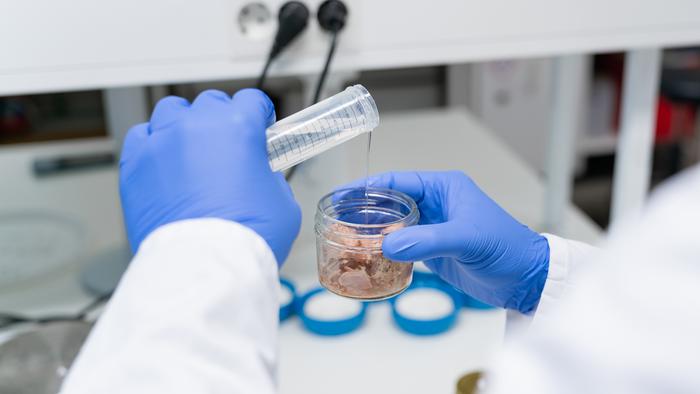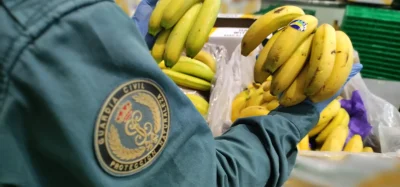New mercury-reducing packaging solution sets a safer standard for canned tuna
Posted: 6 February 2025 | Ben Cornwell | No comments yet
Researchers at Chalmers University of Technology have developed a packaging solution that reduces mercury content in canned tuna by 35 percent.


Researcher pouring the liquid amino acid cysteine into a jar of canned tuna. Credit: Chalmers University of Technology I Hanna Magnusson
Mercury contamination in fish is a growing concern, particularly in species like tuna, which accumulate the toxic substance through the food chain. While fish is a high-quality source of protein and essential nutrients, its mercury content, especially in higher trophic species, poses serious health risks. The World Health Organization (WHO) has listed mercury as one of the top ten most hazardous chemicals to human health, citing its potential to damage the nervous system, with foetuses and young children particularly vulnerable. For this reason, pregnant women are often advised to limit tuna consumption.
Our study shows that there are alternative approaches to addressing mercury contamination in tuna, rather than just limiting consumption.
However, researchers from Chalmers University of Technology in Sweden have found a novel solution to this problem. They’ve developed a packaging system that incorporates a water-based solution of cysteine, an amino acid, which has shown to reduce mercury levels in canned tuna by up to 35 percent.
“Our study shows that there are alternative approaches to addressing mercury contamination in tuna, rather than just limiting consumption. Our goal is to improve food safety and contribute to enhanced human health, as well as to better utilise food that is currently under certain restrictions,” says Mehdi Abdollahi, Associate Professor at Chalmers University and coordinator of the Detoxpak project.
Active packaging solution for safer tuna
The breakthrough relies on a concept called active packaging, which involves materials that interact with food during storage. These materials can affect various properties, such as shelf life, but this is the first time the technology has been used to address food safety, specifically mercury contamination.
Chalmers’ researchers previously explored the possibility of using a silica coating inside packaging to trap mercury. Although, this method was not effective because the mercury in tuna tissues is tightly bound to proteins, making it difficult to release. With this in mind, the team turned to cysteine, a sulfur-containing amino acid that naturally binds to mercury and incorporated it into a water solution.
“We believed this would allow some of the mercury to be drawn out and instead bind to the solution and be discarded. Further research is needed to take care of the removed mercury,” says Przemysław Strachowski, the study’s lead author.
Testing involved various forms of tuna, including fish protein extracts as dry powder, fresh and lab-steamed fish in fillet and mince forms, and commercially available canned tuna samples.
Key findings
The researchers found that the greater the surface area of the fish exposed to the cysteine solution, the higher the mercury uptake. The most significant reduction, 35 percent, was observed in canned minced tuna, from regular grocery stores. Though, they also discovered a maximum threshold of two weeks, after which no further mercury was removed.
Importantly, the process does not require any additional additives or pH modifications. The concentration of cysteine in the solution was the key factor, with a 1.2 percent concentration proving optimal for mercury removal. The researchers did not observe any noticeable changes in appearance or smell of the tested fish samples.
Strachowski added, “The beauty of this type of packaging is that it is active while the product is on the shelf. No additional production steps would be needed if a method like this were used industrially. The application of our results could increase the safety margin for fish consumption.”
A step forward for the seafood industry
The findings of the study are timely, as mercury contamination in tuna has raised alarms in Europe over the last year. A study in October by French non-profit Bloom and consumer-rights group Foodwatch found that all 148 tins of tuna tested across five European countries contained mercury, with 57 percent exceeding the safe limit of 0.3mg per kg, leading to calls for tinned tuna to be banned from hospitals, school canteens, care homes and maternity wards.
With Chalmers University’s new packaging solution, the potential to reduce mercury exposure while maintaining the nutritional value of canned tuna could represent a significant advancement for the seafood industry. Further research and industrial application of this technology may offer a new standard for safer seafood consumption globally.
Related topics
Food Safety, Packaging & Labelling, Shelf life, The consumer, World Food









